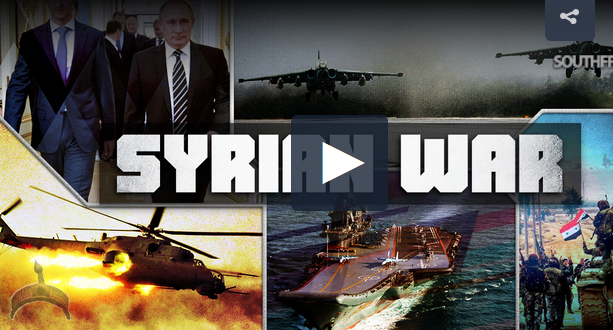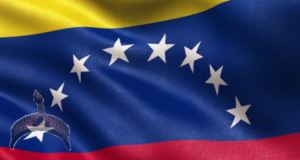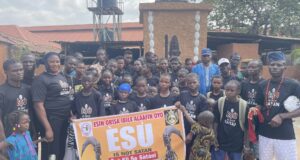Ground Forces
According to the official version of the Russian leadership, the ground campaign was limited to the following:
- Troops of the Special Operations Forces to direct airstrikes, conduct reconnaissance and other unspecified missions behind the enemy’s lines;
- Another group of servicemen employed to train Syrian forces and fulfill the role of military advisers embedded with Syrian units on the battle field;
- Servicemen of the Russian Centre for the Reconciliation of Opposing Sides in Syria participated in directing the reconciliation process, participate in negotiations with local communities and leaders of militant groups and carry out humanitarian operations;
- Units of the Military Police to provide security and assist in restoring law and order in the liberated areas. Some military police servicemen are also tasked with guarding the Russian military facilities and assisting in providing humanitarian aid to the local population;
- Combat engineers to participate in demining of key liberated areas across the country.
Besides these tasks, there were at least two more components of the Russian military forces deployed in Syria. The first is were elements of conventional and rocket artillery systems. Units of apparent Russian origin armed with 2A65 Msta-B 152 mm howitzers and TOS-1A Solntsepyok heavy flamethrower systems have been spotted a number of times, located in frontline positions in key sectors supporting the main effort of offensive and defensive operations. For example, in February 2016, CNN filmed an artillery detachment armed with Mstab-B howitzers near Palmyra. The detachment was guarded by an armored group, which included a few T-90 main battle tanks and BTR-82A armored personnel carriers. The crews appeared to be Russians.
The second component and open secret, is the participation of Russian and Russia-linked private military contractors (PMCs) in the conflict. According to available data, these PMCs served as storm troops in a number of key battles against ISIS, such as in Deir Ezzor and Palmyra, work as artillery support units, and are involved in guarding the liberated gas and oil infrastructure in central Syria. There is no official data as to how many Russia-linked PMCs are currently deployed in Syria. According to some experts, the total is roughly 2,000.
Syria Express
In conjunction with direct military intervention, Russia boosted military aid to the Damascus government and its allied forces. To accomplish this, Russia established an aerial and naval logistics supply network that came to be known as the “Syria Express”. The Syrian Arab Army (SAA) and sanctioned pro-government factions have been supplied with military equipment, including armored vehicles and battle tanks, artillery guns, multiple rocket launchers, anti-tank guided missiles and other needed arms and munitions. It’s widely known that Moscow even provided a limited number of T-90 main battle tanks, TOS-1A Solntsepyok heavy flamethrower systems and Uragan multiple rocket launcher systems. The Syrian military has also received Pantsir-S1 air defense systems and materiel support needed for the maintenance of its aircraft and air defense systems.
At least 17 vessels of various types are involved in providing military supplies to Syria via the maritime route (Tartus-Sevastopol- Novorossiysk). It is interesting to note that at critical stages of the conflict the Russian military made use of non-military vessels. Analysts stressed that this proved that Russia lacks significant sealift capacity and has a very limited number of landing craft and amphibious ships that can be dedicated to providing supplies to Syria. The Russian Navy has been slowly remedying this obvious shortcoming by building larger amphibious warfare vessels of larger displacement in recent years.
MILITARY DEVELOPMENTS
In the period from September 30, 2015 to June 9, 2018, Syrian government forces, backed by Russia and Iran, participated in multiple battles against ISIS, Jabhat al-Nusra and their allies. All of them can be broken down into three categories:
- Operations to stabilize the situation and to prevent the fall of the Damascus government;
- Operations to defeat the most influential terrorist groups – ISIS and Jabhat al-Nusra – in central, eastern and northern Syria;
- Operations to liberate multiple militant-held pockets within the government held area.
In late September, 2015 Syrian forces were spread among different areas of operation, their communications were overstretched and operations were poorly planned and coordinated. At the same time, weapons, munitions, equipment and recruits were flowing to militant groups in Syria through Turkey. The Russians had to assist the SAA in dealing with all of these issues.
The general course of the conflict can be separated into the four stages.
Northern Latakia, Homs, Palmyra
At the outset, or first stage of the campaign, the provinces of Latakia, Homs, Hama, Deir Ezzor and the Damascus countryside became the main areas of close operational support provided by the Russian military to the SAA, the National Defense Forces (NDF) and other pro-government factions. In Deir Ezzor, the key task of the Russian Aerospace Forces and the Syrian Arab Air Force was to provide supplies and fire support to a garrison of the provincial capital besieged by ISIS and to prevent the fall of the city. This goal remained relevant until 2017 when the siege was broken.
In the province of Latakia, Russian forces propelled an advance of the SAA along the M4 highway, allowing government forces in the period from October 2015 to August 2016 to reassert control over the province. The SAA, the NDF and other pro-government factions significantly shortened the militant-held part of the Syrian-Turkish border, culminating in the capture of the strategically important town of Kinsabba. The front in northern Latakia was stabilized and the threat of a Jabhat al-Nusra-led offensive on the Syrian coast was neutralized. The Russian Su-24 warplane was shot down by the Turkish Air Force during this very advance. Ankara did not desire a Syrian government restoration of control over the country’s border, as Turkey’s political elite were benefiting greatly from illicit trade across the border, as well as providing the free flow of reinforcements and resupply of militants operating in Syria.
An additional offensive was opened in the province of Aleppo from October 2015 to December 2016 when government forces engaged the Jabhat al-Nusra-led bloc north and southwest of the provincial capital, and ISIS east of it. Government forces lifted the two-year-long ISIS siege of the Kuweires military airbase, expanded a buffer zone west of the Khanasir Highway, the main supply line to the government-held part of Aleppo city, and cut off the key supply lines heading from the Turkish town of Kilis to the militant-held part of Aleppo city. Thus, the SAA and its allies divided the militant-held areas in northern and western Syria into two separate enclaves. This advance also predetermined the future of Aleppo city.
Small scale military actions were conducted in northern Hama from October to December 2015. In this area, the Syrian-Iranian-Alliance achieved limited gains in comparison to the developments in Latakia and Aleppo. Pro-government forces advanced along the M5 highway and west of it, outflanking a group of militant-held towns and villages, including Kafr Zita and Lataminah. Subsequent militant counter-attacks resulted in little gains and the frontline was more or less stabilized.
Amid successes in western and northern Syria, government troops carried out a series of advances on ISIS positions in the province of Homs. On March 27, 2016 they liberated the ancient city of Palmyra. A few days later, on April 3, another important city, al-Qaryatayn, was also liberated. ISIS forces in central Syria were forced to withdraw to the desert. During the following month of June, the SAA, the Desert Hawks and other pro-government factions made an attempt to reach and capture the town of Tabqa from ISIS advancing from the direction of Ithriyah; however, they overstretched their logistical lines and were forced to retreat, suffering casualties after a series of ISIS counter-attacks.
One of the key factors behind the success of the SAA and its allies was a massive air campaign carried out by the Russian Aerospace Forces. Russian aircraft not only provided close air support to government troops, but also contributed significant efforts to destroying infrastructure of Jabhat al-Nusra and ISIS striking their convoys, gatherings, weapons depots, HQs and other facilities deep behind the actual frontlines, attacking targets in the provinces of Idlib, Aleppo, Deir Ezzor and Raqqah. ISIS’ oil infrastructure and oil convoys were among the most important targets of the air campaign. Thus, the Russian military undermined one of the terrorist group’s key financial resources.
Aleppo City, Western Ghouta, Northern Hama, retreat from Palmyra
The Russian-led operation against militants entered its second stage in June 2016 following the collapse of a US-Russian deal aimed at establishing a ceasefire regime in the war-torn country. Under the terms of the deal, Jabhat al-Nusra, other al-Qaeda-linked groups and ISIS were excluded from the ceasefire regime. However, so-called moderate opposition groups were not able to separate themselves from their terrorist affiliates. These groups often even shared the same facilities and positions on the frontlines with Jabhat al-Nusra units. Thus, the ceasefire became impossible. The situation was especially complicated in the city of Aleppo, a section of which was controlled by the Jabhat al-Nusra-led bloc.
With the collapse of the attempted ceasefire, the SAA’s campaign to retake Aleppo took place from June 25, 2016 to December 22, 2016, ending with the government’s liberation of the entire city. During the summer phase of the campaign, the SAA and its allies advanced in the Mallah Farms area and cut off the Castello Road, the only supply line to the militant-held, eastern part of Aleppo. Then, government troops repelled all militant attempts to break the siege. Especially fierce clashes took place in the area of al-Rashidin in October and November. A battle of attrition was waged on the encircled militants and during the final phase of the advance, militants lacked weapons and supplies to counter government advances, while the SAA effectively used its advantage in military equipment, manpower and firepower. Humanitarian corridors were also opened to allow civilians to withdraw from the combat area.
On December 13, a local ceasefire agreement was reached between the opposing sides and by December 22, all remaining radical members of the militant groups and their relatives surrendered all their heavy weapons and withdrew to the militant-held part of Idlib via an open corridor. The deal ensured that further civilian casualties, inevitable in the urban warfare, would be avoided. The city of Aleppo, also known as the industrial capital of Syria and the second-largest city in the country was finally liberated.
In addition to regular troops of the SAA and the NDF, the operation involved all elite factions of the Syrian military and Iranian-backed forces including the 4th Armored Division, the Republican Guard, the Syrian Marines, the Tiger Forces, the Desert Hawks, the Syrian Social Nationalist Party, Liwa al-Quds, Lebanese Hezbollah and Harakat Hezbollah al-Nujaba. The Russian Special Operations Forces and the Iranian Islamic Revolutionary Guard Corps also participated. According to reports, over 25,000 pro-government fighters were involved. About 15,000 militants from various factions deployed inside and around the city opposed them.
Neither side provided official information regarding the casualties they sustained. According to estimates by various sources, up to 1,500 government fighters were killed in the battle. In turn, about 2,000 militants were killed. The number of injured militants remains unknown. Furthermore, Jabhat al-Nusra and its allied groups expended a large portion of their unguided rocket and anti-tank guided missile arsenal over the course of the fighting, and lost a large number of armored vehicles as well. A key objective of the operation was the evacuation of civilians via opened humanitarian corridors. According to the Russian Ministry of Defense, over 150,000 civilians were evacuated from the combat area during the operation.
It is interesting to note that a naval group led by the Kirov class nuclear-powered battlecruiser Pyotr Velikiy and heavy aircraft-carrying missile cruiser Admiral Kuznetsov were deployed in close proximity to Syria during the battle for Aleppo. According to some experts, the addition of these powerful vessels to the Russian task group involved in the operation, especially considering their defensive capacities in anti-air warfare, provided a significant deterrent to any decision by Washington to intervene, thus avoiding a direct confrontation between the US-led coalition and the Syrian government when the conflict was passing its crucial turning point.
There were two more important factors that impacted the situation in Aleppo:
- a Jabhat al-Nusra-led offensive on government positions in northern Hama;
- an ISIS offensive on the ancient city of Palmyra.
Both of these attacks took place during the key stages of the battle for Aleppo. Thus, ISIS and Jabhat al-Nusra de-facto united their efforts in attacking the SAA and its allies along different fronts, in an attempt to draw crucial Syrian military manpower and effort away from its operation to liberate the strategic city. The Jabhat al-Nusra-led advance in northern Hama started on August 29 and lasted until November 6. This attack was actively supported by Jund al-Aqsa, which in 2017 merged with ISIS, as well as other so-called moderate opposition groups. Using surprise effect and suicide bombers, militants broke the NDF’s defense and captured a number of villages. In September, October and early November, fierce clashes continued. By November 6, the SAA, the NDF and their allies had been able to reverse the militants’ gains and to stabilize the front.
ISIS launched its attack on Palmyra on December 8 and captured the city by December 10. The terrorist group had captured the ancient city amid fierce clashes with the SAA and the NDF. On December 11, government forces launched an unsuccessful counter-attack to re-capture the city. On December 12, ISIS units started a large-scale advance to capture the Tiyas Airbase west of Palmyra. Terrorists carried out multiple attempts to capture the airbase, but were not successful. They were equally unsuccessful in efforts to cut off the road between the airbase and the city of Homs. On December 22, the frontline stabilized.
According to available data, ISIS concentrated up to 5,000 militants for the December advance. The government’s positions were defended by about 3,000 fighters, including units of the SAA, Hezbollah, Liwa Fatemiyoun and later the Tiger Forces. They were backed up by Syrian and Russian air support. According to pro-government sources, over 600 ISIS members were killed in the clashes. Pro-ISIS sources claim that over 300 pro-government fighters were killed.
During the months of October and November, prior to the pivotal victory in Aleppo, the SAA also carried out a successful operation in the Damascus countryside, liberating the militant-held sector of Western Ghouta. Government forces broke the militants’ defense and in late November forced them to accept a reconciliation agreement. A significant number of militants and their families departed to the militant-held territory of Idlib. Many combatants and their families chose to remain in the area and settled their legal status with the Syrian government, under the supervision of security forces.
The Syrian-Iranian-Russian alliance achieved important victories liberating the city of Aleppo and the Western Ghouta region of Damascus, but lost Palmyra. This was a major PR loss, and was actively seized upon by the mainstream media to slam the Russian-backed anti-terrorist campaign in Syria. The Western mainstream media made every attempt to overshadow the many successes of the campaign by highlighting the setback in Palmyra.
Palmyra Retaken, Wadi Barada, Eastern Aleppo, Western Qalamoun, Deir Ezzor city, eastern Syria desert
The third stage of the Russian military operation in Syria started immediately after the liberation of Aleppo. Over 25,000 pro-government fighters previously involved in the Aleppo battle were free for further operations across the country. The fall of Palmyra forced the Syrian-Iranian-Russian alliance to alter their strategic planning in light of this setback. The following goals and priorities were identified and agreed upon:
- to secure and restore order in the liberated city of Aleppo;
- to retake Palmyra from ISIS;
- to purge ISIS in wide areas in the eastern regions of both Aleppo and Homs provinces and, if this proved possible, to lift the ISIS siege of the city of Deir Ezzor;
- to deal with multiple militant-held pockets still existing within the government-held regions, either achieved by military means or through safe passage and relocation agreements.
A military operation to take back Palmyra began on January 13, 2017 from the direction of the Tiyas Airbase, at that time still being besieged by ISIS. Units of the SAA, the Tiger Forces, Liwa Fatemiyoun, Hezbollah, the Republican Guard and the 5th Assault Corps spent a month clashing with ISIS along the Tiyas-Palmyra highway and re-entered the ancient city for the second time on March 2. On March 4, Palmyra was fully secured.
The advance was marked by very active Russian involvement, including the participation of PMCs, the Russian Aerospace Forces and a significant effort by Special Operations Forces. According to the Russian Defense Ministry, ISIS lost over 1,000 militants killed or wounded in the ensuing struggle, along with 19 battle tanks, 37 armored fighting vehicles, 98 pickup trucks armed with heavy weaponry and 100 other vehicles. The heavy casualties suffered by ISIS during the battles for Palmyra and their failed advance on the Tiyas airbase, set the conditions for further operations against the terrorist group in the Homs-Deir Ezzor desert, as well as in the eastern part of Aleppo province.
From January through June, government forces forced ISIS terrorists to retreat along a wide front in eastern Aleppo, leading to the liberating of the Jirah Airbase, Deir Haffer, Maskanah and a number of other points. By the middle of June, the SAA advanced into the southern periphery of the province of Raqqah. This caused great consternation in the mainstream media and led to a growth of tensions with the US-led coalition and its proxies. On June 18, an F/A-18 Super Hornet from the USS George H.W. Bush aircraft carrier shot down a Syrian Air Force Su-22M4 south of the town of Tabqah, which was then occupied by the Syrian Democratic Forces (SDF) – a Kurdish dominated coalition of armed groups backed by Washington. The Su-22M4 was supporting the SAA’s anti-ISIS operation in the area. The US claimed that the warplane was posing an imminent threat to the SDF, and was shot down in an act of self-defense. Regardless of efforts of both ISIS and the U.S. led coalition and its proxies on the ground, the SAA established control over the key junction of Resafa, thus securing the Ithriyah-Resafa road and cutting the SDF off from any advance into central Syria.
From May to September, government forces carried out another offensive against ISIS, this time in central and eastern Syria. They liberated the entire desert regions north and south of the Homs-Palmyra highway, and reached the border with Jordan, both northeast and northwest of the area of At-Tanf. During the course of the operation, US-backed proxies branded as elements of the Free Syrian Army, miraculously appeared in the area and attempted to oppose the advance of the SAA in eastern Syria. These attempts proved unsuccessful.
During the advance, the Syrian military carried out the first air assault operation since the beginning of the war. On August 11, units of the Tiger Forces, led by Gen. Suheil al-Hassan, landed behind ISIS defensive positions at an administrative boundary line between the provinces of Homs and Raqqah. The operation immediately led to the capture of two settlements and added fuel to the general SSA advance in the area. Up to 30 ISIS members were killed in the ensuing clash.
Despite all of these advances, the issue of allowing a US-led coalition military garrison on the Baghdad-Damascus highway, in the area of At-Tanf, remained unresolved. Washington showed its readiness to use force to keep the highway closed to the Syrian government, carrying out airstrikes on pro-government forces there [for example on May 18]. The US-led coalition declared a 50-km wide zone of responsibility around At Tanf, stating that US military forces were deployed there to fight ISIS in the region; however it soon became apparent that ISIS seemed to be able to freely operate within this zone of protection. The US had set up a de-facto exclusion zone, where ISIS militants could seek refuge, regroup and strike at will, all the while protected by a US enforced no-fly zone.
On July 23, government forces advanced on ISIS positions along the Palmyra-Sukhna-Deir Ezzor highway with the aim of capturing Sukhna. They reached the town in late July and established full control over it on August 5. On August 27, the SAA and its allies launched an offensive to break the ISIS siege on the city of Deir Ezzor. On September 5, the siege was lifted from the western portion of the city. On September 9, government troops broke the encirclement of the Deir Ezzor airport. All ISIS counter-attacks were repelled.
According to pro-government sources, the multi-pronged advance against ISIS that led to the liberation of central Syria and lifted the siege of Deir Ezzor involved over 50,000 pro-government fighters from various factions. About 3,000 ISIS members were reportedly killed or injured. The SAA and its allies lost up to 1,000 troops, according to pro-opposition sources. The city of Deir Ezzor was fully liberated from ISIS on November 17, after about a month of urban clashes.
Additionally, a military operation to retake the eastern bank of the Euphrates was launched. The SAA liberated the town of al-Mayadin on October 12 and the town of al-Bukamal on November 19. ISIS was effectively defeated in the area, its self-proclaimed Caliphate had collapsed.
During the same time period as the above mentioned developments, the SAA carried out three additional military operations in western Syria.
- In the period from December 23, 2016 to January 29, 2017 government troops established control over the entire area of Wadi Barada in the province of Rif Dimashq. A part of the area was liberated thanks to a reconciliation agreement reached between the government and more or less moderate members of local armed groups. The liberation of this area allowed the SAA to secure the supply of water to Damascus.
- From July 21 to August 15, the SAA, Hezbollah and the Lebanese Army carried out a coordinated operation against Hayat Tahrir al-Sham (formerly Jabhat al-Nusra) and ISIS in the western Qalamon area on the Syrian-Lebanese border. The entire border between the two countries became free of terrorists.
- From October 7, 2017 to February 13, 2018 the SAA and its allies reclaimed a great deal of land in northeastern Hama and eastern Idlib, killing over 1,000 members of ISIS, Hayat Tahrir al-Sham and other militant groups. The government advance in western Idlib showed that even in this most militant of enclaves, which has been controlled by an assortment of opposition and terrorist groups since the early years of the war, the militants were increasingly unable to win in a head-to-head engagement with the SAA.
 Ọmọ Oòduà Naija Gist | News From Nigeria | Entertainment gist Nigeria|Networking|News.. Visit for Nigeria breaking news , Nigerian Movies , Naija music , Jobs In Nigeria , Naija News , Nollywood, Gist and more
Ọmọ Oòduà Naija Gist | News From Nigeria | Entertainment gist Nigeria|Networking|News.. Visit for Nigeria breaking news , Nigerian Movies , Naija music , Jobs In Nigeria , Naija News , Nollywood, Gist and more









